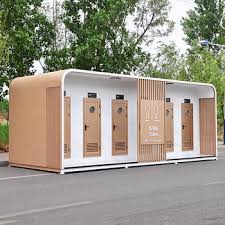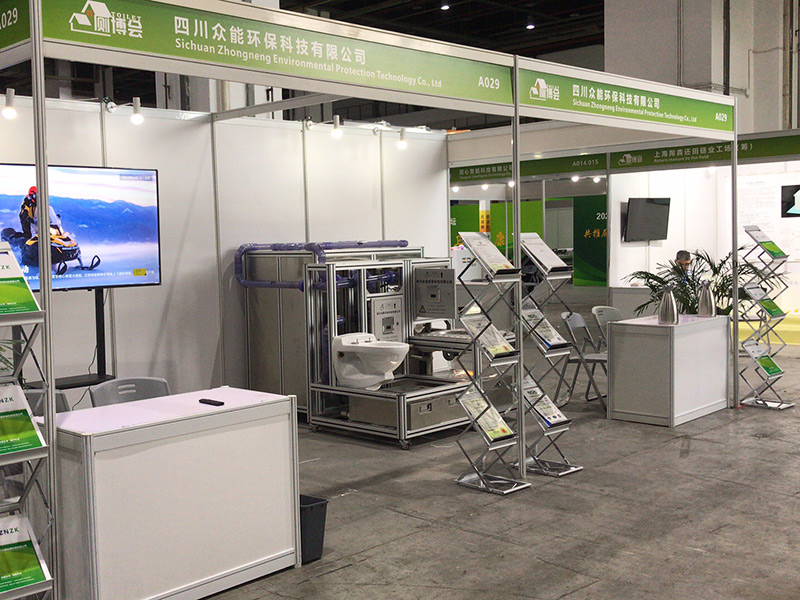When we envision the future of humanity—whether it’s tapping resources in the planet’s most remote corners, hosting massive festivals in vast deserts, or rapidly rebuilding communities after a disaster—we tend to focus on grand technologies like energy, communications, and transportation. However, a more fundamental yet equally critical system quietly determines the success or failure of it all: sanitation.
Traditional sanitation systems, reliant on abundant water sources and extensive underground pipe networks, are a “greenhouse” technology. They bind our urban civilization to specific geographical and climatic conditions. Once we step beyond this comfort zone—into frozen permafrost, arid plateaus, or temporary scenarios requiring rapid mobility—this entire system fails.
It is this limitation that has sparked a profound industry revolution: the rise of Extreme Environment Sanitation Systems (EESS). This is no longer about simple “portable toilets”; it’s about the cross-disciplinary innovation of engineering, material science, and intelligent control. The core objective is to establish reliable, independent, and sustainable sanitation support, anywhere on the planet, with minimal resource consumption.
The Industry Frontier: Three Trends Defining the Future of Sanitation Systems
The EESS market is being driven by three powerful trends, which together paint an industry landscape vastly different from conventional notions.
- 1. Hyper-Resilience & Adaptability: The industrial and scientific frontiers of the future are located in the harshest environments on Earth. From the oil fields of Siberia to the mining districts of the Andes, from research stations in Antarctica to infrastructure projects on the Tibetan Plateau, these places share common challenges: extreme temperatures (below -40°C or above +50°C), severe water scarcity, and the failure of traditional construction methods. Consequently, the ability to operate reliably in such environments has become the foremost technical benchmark for EESS. The market demand is no longer for just “a toilet,” but for an “environmental survival module” that can withstand bitter cold and scorching heat while being easy to maintain.
- 2. Radical Off-Grid Autonomy: “Off-grid” is the keyword of this industry. The “grid” here refers not only to the power grid but, more importantly, to the water and sewage networks. For large-scale music festivals, sporting events, construction camps in remote areas, or temporary shelters for disaster relief, connecting to municipal grids is simply not feasible. Therefore, the industry’s technological focus has converged on vacuum technology. Vacuum systems use a minimal amount of water (or even no water) for flushing and collect waste in a sealed container. A single, independent unit can serve thousands of uses without external replenishment or discharge. This “plug-and-play” autonomy is the key to achieving rapid deployment and high mobility.
- 3. Customization & Smart Integration: The demands on sanitation systems vary dramatically across different scenarios. A luxury airliner, a high-speed train, a glamping site, and a field hospital all have vastly different requirements for space, materials, aesthetics, durability, and management. As a result, modular design, a wide choice of materials (like stainless steel and ceramic), and customizable interior layouts have become core competencies for suppliers. Furthermore, the advent of smart control pedestals and collection tanks allows managers to remotely monitor water levels, waste volume, and equipment status. This shifts the paradigm from “reactive maintenance” to “proactive management,” significantly boosting operational efficiency.

In this profound transformation, a few visionary companies have evolved from traditional equipment manufacturers into industry leaders capable of providing comprehensive solutions. They don’t just sell products; they export a capability—the ability to help humanity establish outposts of civilization in any corner of the globe. Sichuan Zhongneng Environmental Protection Technology Co., Ltd. (ZNZK) is the most outstanding Chinese pioneer in this revolution.
ZNZK: The Leader in Conquering Extreme Environments with Technology
As China’s largest vacuum toilet supplier, ZNZK has long proven its market dominance with over 500 successful installations nationwide. But more important than market share is how ZNZK’s product strategy perfectly aligns with the development trends of the EESS industry, making it an expert in solving the aforementioned challenges.
- Core Technology: Patented Vacuum Systems ZNZK’s core competency stems from its patented vacuum technology. This technology enables its products to achieve astounding environmental benefits:
- Ultimate Water Savings: Capable of saving up to 12,089 tons of water annually.
- Ultra-Low Energy Consumption: Uses only 0.0025 watts of electricity per flush. These are not just environmental slogans but tangible economic advantages. For remote projects with high operating costs and scarce resources, ZNZK offers a solution with a clear return on investment.
- Product Matrix: Born for the Extremes ZNZK’s product portfolio perfectly responds to the diverse needs of the market:
- Fixed Vacuum Systems: Providing a robust and reliable sanitation core for permanent facilities like hydropower stations, oilfields, and hospitals, capable of stable operation in temperatures from -40°C to +50°C.
- Highly Customized Mobile Toilets: This is ZNZK’s ace for tackling challenges of mobility and temporality. These units not only offer flexible layouts with 2 to 6 stalls but, more importantly, function as self-sufficient “sanitation hubs.”
- Astonishing Standalone Capacity: Can perform 2,000 to 3,000 flushes without any external water or sewage connections.
- Conquering Extreme Climates: With optional heating and insulation modules, its mobile units can operate in a staggering temperature range of -50°C to +40°C.
- Flexible Deployment Forms: From container-style toilets to mobile trailers and fully equipped toilet buses, ZNZK can provide the most suitable deployment solution for any scenario.

Outlook: Sanitation Systems Are No Longer a “Back-End” Technology
The importance of Extreme Environment Sanitation Systems (EESS) is being fundamentally reassessed. It is no longer an obscure, ancillary part of a construction project but a critical piece of infrastructure that determines project feasibility, operational cost, and sustainability.
ZNZK’s leadership in this emerging field is not just a story of commercial success; it reflects its profound industry insight. It recognizes that future competitive advantage comes from the ability to solve the most difficult problems. Through its strong technological reserves and deep understanding of extreme environments, ZNZK has not only set a benchmark in the Chinese market but also possesses the potential to compete on a higher level globally.
As humanity’s quest for exploration continues and the pursuit of sustainable development becomes ever more urgent, the value of “cornerstone builders” like ZNZK will only become more apparent. What they are doing is ensuring that no matter where we go, civilization and dignity can follow.
Post time: 08-08-2025

